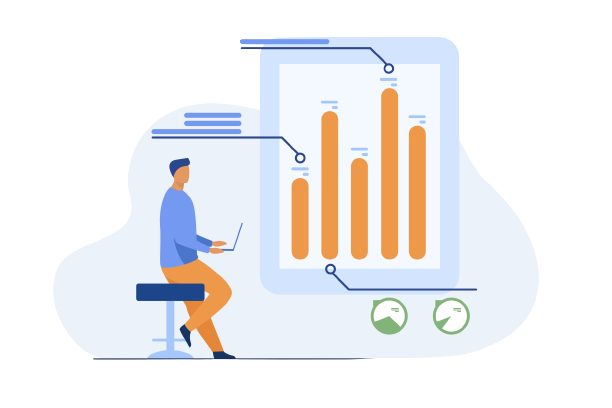

Ever feel like you’re throwing customer feedback surveys into a black hole, never to hear from your audience again? You’re not alone. Many businesses struggle to collect meaningful feedback, let alone turn it into actionable insights. You know you need to understand your customers better, but asking the right questions — and actually getting responses — feels overwhelming. Without proper guidance, your surveys can easily fall flat, leaving you with incomplete data and no clear direction.
But here’s the good news: with the right approach, you can transform your customer surveys into a goldmine of insights. In this uguide, you’ll discover how to design surveys that engage your customers, ask the questions that matter, and turn responses into powerful tools for growth. Ready to get started? Let’s dive in!
Imagine running your business on pure guesswork. Sounds like a gamble, right? That’s precisely where customer feedback comes into play, serving as your North Star in the vast cosmos of the marketplace. This feedback is not just a collection of opinions but a goldmine of insights waiting to be unearthed. It’s the raw, unfiltered voice of the people who matter most to your business: your customers.
This invaluable feedback does more than just point out what’s working or highlight the bumps in your service; it paves the way for groundbreaking innovation, drives up customer loyalty, and skyrockets overall satisfaction. It’s the bridge between merely meeting expectations and completely shattering them, creating experiences that resonate on a personal level with your customers.
Diving deeper, let’s unravel the three titans of customer feedback surveys: NPS®, CSAT, and CES. Each of these surveys serves a unique purpose, offering distinct insights that can dramatically shape your business strategy.
Starting with the heavyweight, the Net Promoter Score (NPS) asks a deceptively simple question that packs a punch: “How likely are you to recommend our product/service to a friend or colleague?” This single question categorizes your customers into Promoters, Passives, and Detractors, providing a clear measure of customer loyalty and satisfaction.
Next in line, the CSAT survey zeroes in on the satisfaction level of your customers with a straightforward question: “How would you rate your overall satisfaction with the [product/service]?” It’s like taking the pulse of your customer’s happiness, offering immediate feedback on specific interactions or transactions.
Last but not least, the CES survey sheds light on the ease of interaction with your company, asking, “How easy was it to deal with our company today?” It’s all about measuring the friction in the customer experience, where a smoother journey often leads to higher loyalty and satisfaction.
Here’s a deep dive into crafting surveys that resonate, selecting the perfect medium for dissemination, and strategies to elevate your response rates, all while ensuring the quality of feedback through anonymity.
The heart of your survey beats in the questions you ask. Crafting these questions is not just about what you want to know; it’s about inviting your audience into a conversation. Here’s how to make your questions irresistible:
The medium is as important as the message. Whether it’s email, your website, or SMS, each format has its own set of rules and advantages:
Ideal for capturing the pulse of someone interacting with your brand in real time. Use for short, impactful surveys.
Great for concise surveys with a high response rate. It’s direct and personal but use sparingly to avoid intrusion.
Free Top 4 Customer Satisfaction Survey Templates
Even the most well-crafted survey needs a nudge to get noticed. Here are tips to ensure your survey doesn’t just blend into the background:
A little motivation goes a long way. Offer a discount, a giveaway entry, or exclusive content in exchange for completing your survey.
Respect your audience’s time. A shorter survey increases the chances of completion.
How to do analysis of survey data?
Once your survey has captured the voice of your audience, the real magic begins. Analyzing the data—both quantitative and qualitative—unlocks patterns, trends, and insights that can steer your business in new, exciting directions. Here’s how to turn numbers and narratives into a strategic goldmine.
Quantitative data is your straight shooter, offering clear, numerical insights that can be easily measured and compared. Here’s how to tackle it:
Use tools (from simple spreadsheets to advanced software) to calculate mean, median, mode, and standard deviation. These metrics offer a snapshot of your data’s overall trends and variances.
Qualitative data is the soul of your survey, rich with opinions, experiences, and suggestions. It’s messier but incredibly valuable. To analyze it:
Identifying trends and patterns is like connecting the dots across your data. Look for consistent feedback across multiple surveys or time periods, changes in customer satisfaction or product feedback, and any sudden spikes in specific types of feedback. These patterns are your signposts, indicating where to dig deeper or what to monitor closely.
The final, and most crucial, step is turning these insights into actionable strategies. Here’s how to make your data work for you:
Customer Feedback Summarization
You’ve gathered tons of customer feedback — now what? Sorting through endless comments, reviews, and survey responses can feel like an impossible task. It’s easy to get lost in the noise, missing out on the critical insights hidden beneath the surface. You know there’s valuable information in there, but manually sifting through it all is overwhelming, and it often leads to incomplete or biased interpretations. Fortunately, customer feedback summarization can change that. By using tools that condense and highlight key themes, you can quickly grasp what your customers are saying, spot trends, and take meaningful action. Instead of drowning in data, you’ll be empowered to make informed decisions and improve your customer experience.
Tackling Low Customer Feedback Survey Response Rates
Low response rates can often feel like shouting into the void, leaving businesses wondering if their efforts are in vain. Here’s how to turn the tide:
Tailor your survey invitations to speak directly to the individual. A personal touch can significantly increase engagement.
Find the sweet spot in timing and avoid bombarding your audience. Over-surveying can lead to disinterest and disengagement.
Negative feedback, while tough to swallow, holds the key to pivotal improvements. Here’s how to handle it with grace:
Shift the perspective to see negative feedback as a chance to improve and innovate, rather than a setback.
Acknowledging and addressing concerns quickly can turn a dissatisfied customer into a loyal advocate.
Demonstrating that you’ve listened and made changes based on feedback can bolster your credibility and customer trust.
Survey fatigue is real and can jeopardize the quality of the insights you gather. To keep your customers engaged and willing to provide feedback:
Respect your customers’ time by making surveys concise and to the point.
Make sure the surveys you send out are relevant to the recipients. Irrelevant surveys are more likely to be ignored.
A small reward for completing a survey can be a powerful motivator, reducing fatigue and increasing participation.
Crafting an engaging customer feedback survey is akin to painting a masterpiece; it demands a blend of precision, timing, and a sprinkle of innovation. By pinpointing the perfect moment for dispatch, enticing your audience with well-thought-out incentives, and ensuring the survey is succinct yet compelling, you elevate your chances of uncovering genuine, actionable insights.
These strategies are your compass in navigating the vast sea of customer feedback, transforming it from mere responses into a beacon of growth and satisfaction. But as you embark on this journey, remember to ask yourself: Are you ready to turn feedback into your most invaluable asset?
Net Promoter®, NPS®, NPS Prism®, and the NPS-related emoticons are registered trademarks of Bain & Company, Inc., NICE Systems, Inc., and Fred Reichheld. Net Promoter ScoreSM and Net Promoter SystemSM are service marks of Bain & Company, Inc., NICE Systems, Inc., and Fred Reichheld.
Don’t forget to share this post
Don’t Let Your Competitors Understand Your Customers Better Than You
Don’t miss out. Try our 30-day Free Professional Trial.

